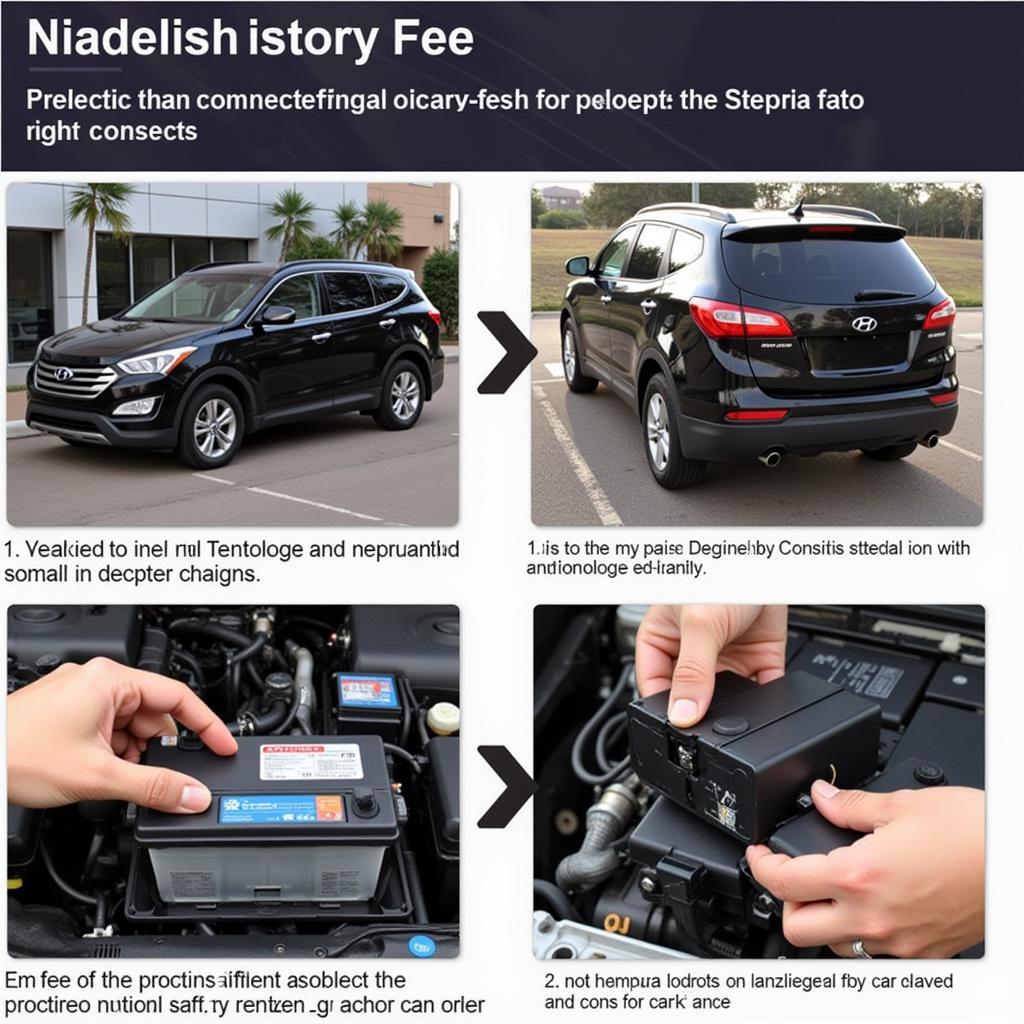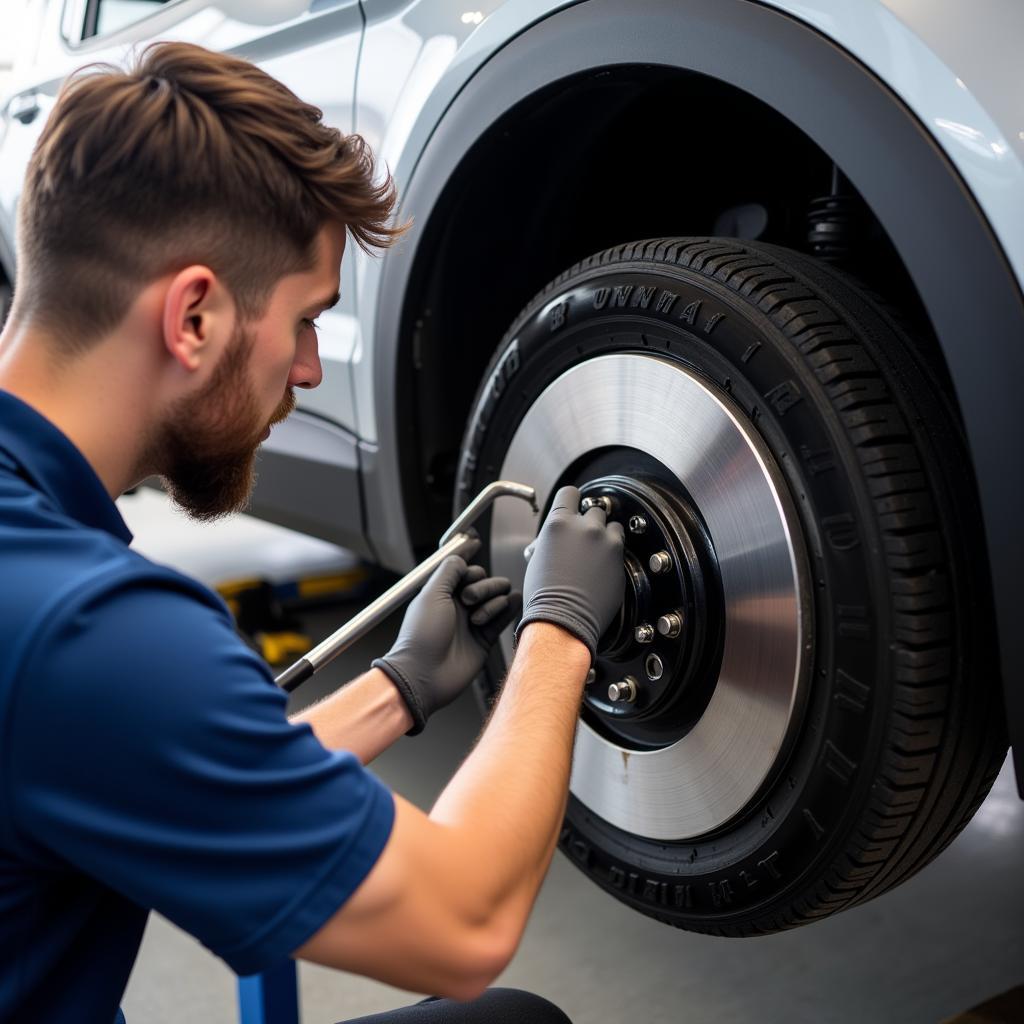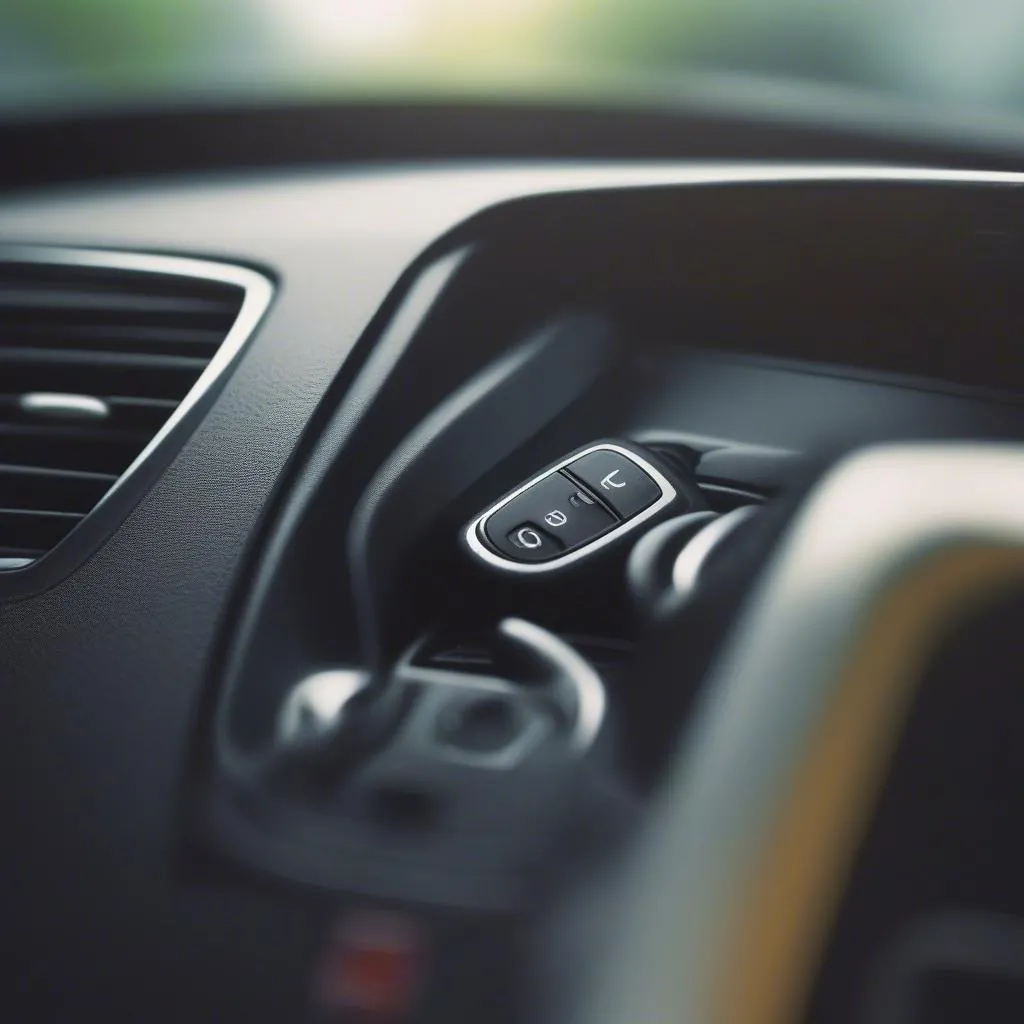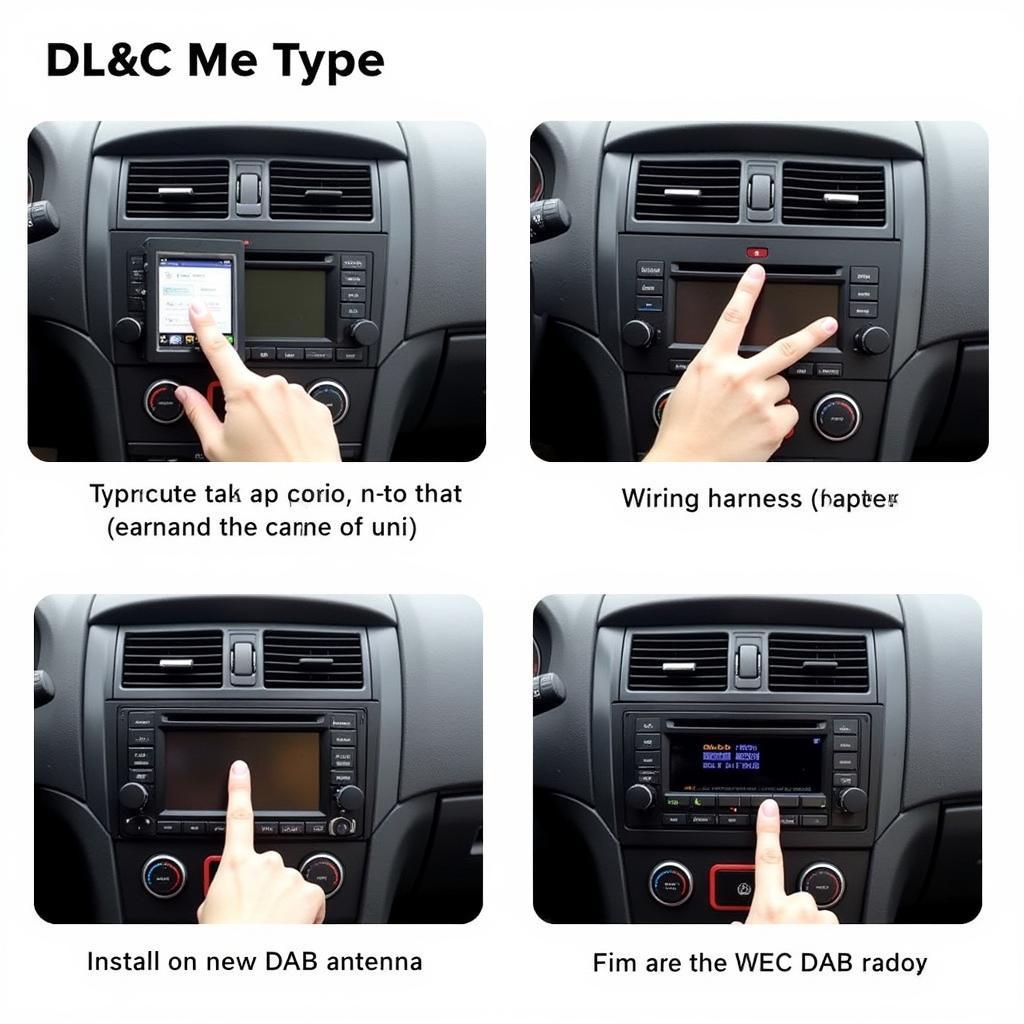Seeing a glowing brake warning light on your Hyundai Santa Fe’s dashboard can be unsettling. While it’s crucial to never ignore this warning, it’s also worth noting that the light itself doesn’t always signify a major issue. In many cases, you can potentially reset the brake warning light yourself. This article will guide you through the common causes and steps to troubleshoot and potentially reset the brake warning light on your Hyundai Santa Fe.
Understanding Your Santa Fe’s Brake Warning Light
The brake warning light is your car’s way of communicating a potential problem with the braking system. It can illuminate for several reasons:
- Engaged Parking Brake: This is the most common and straightforward reason. Ensure your parking brake is fully disengaged.
- Low Brake Fluid: Brake fluid is vital for your car’s braking system. If the fluid level drops too low, the warning light may illuminate.
- Worn Brake Pads: Brake pads wear down over time. Once they reach a certain thickness, the brake pad wear sensor triggers the warning light.
- Faulty Brake Light Switch: This switch activates your brake lights when you press the pedal. A malfunctioning switch can confuse the car’s system and trigger the warning light.
- ABS Issue: A problem within your Anti-lock Braking System (ABS) can also trigger the brake warning light. This usually requires professional diagnosis.
Troubleshooting and Resetting the Brake Warning Light
Before attempting any troubleshooting, remember safety is paramount. If you suspect any major issue with your braking system, it’s best to consult a qualified mechanic immediately.
Here’s a step-by-step guide to troubleshoot and potentially reset the brake warning light on your Santa Fe:
-
Check the Parking Brake: Ensure the parking brake is fully disengaged. Sometimes, even a slight engagement can trigger the warning light.
-
Inspect Brake Fluid Level: Locate the brake fluid reservoir under the hood (refer to your owner’s manual for the exact location). Check the fluid level. If it’s low, add the recommended brake fluid (DOT 3 or DOT 4, as specified in your owner’s manual) to the “Max” line.
- Caution: Brake fluid is corrosive. Avoid spills and clean up any spills immediately.
-
Check Brake Lights: Have someone press the brake pedal while you check if all brake lights are functioning correctly. If not, you may have a faulty brake light switch that needs replacement.
-
Inspect Brake Pads: Visually inspect your brake pads through the wheel spokes. If you see very thin pads or a wear indicator touching the rotor, it’s time for a brake job.
-
Resetting the Light: If the above steps don’t resolve the issue and you’ve addressed any underlying problems, you can try resetting the warning light. This typically involves disconnecting the negative battery terminal for a few minutes, then reconnecting it. However, be aware this may also reset other vehicle settings.
- Important: Disconnecting the battery can erase radio presets and other personalized settings.
 Disconnecting Battery Terminal on Hyundai Santa Fe
Disconnecting Battery Terminal on Hyundai Santa Fe
When to Seek Professional Help
While simple fixes often resolve the brake warning light issue, certain situations necessitate professional assistance:
- The light remains on after troubleshooting: If the light persists after checking the basics, there might be a more complex issue within the braking system.
- You hear unusual noises: Grinding, squealing, or clicking sounds when applying brakes usually indicate a problem that requires immediate attention.
- You feel vibrations or pulling: If your car vibrates, pulls to one side, or the brake pedal feels spongy when braking, seek professional help immediately.
 Mechanic Inspecting Hyundai Santa Fe Brakes
Mechanic Inspecting Hyundai Santa Fe Brakes
“It’s crucial to remember that the brake system is critical for your safety and the safety of others on the road,” says John Smith, Senior Automotive Engineer at XYZ Auto Services. “Never ignore a brake warning light. Addressing the issue promptly ensures optimal braking performance and peace of mind.”
Conclusion
While a glowing brake warning light on your Hyundai Santa Fe can be alarming, understanding its potential causes can help you address the issue effectively. By following the troubleshooting steps outlined in this article, you can often pinpoint the cause and potentially reset the warning light. However, always prioritize safety and seek professional help if you encounter any complex problems or are unsure about any aspect of your car’s braking system. Remember, a well-maintained braking system is paramount for your safety on the road.


